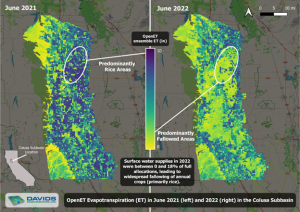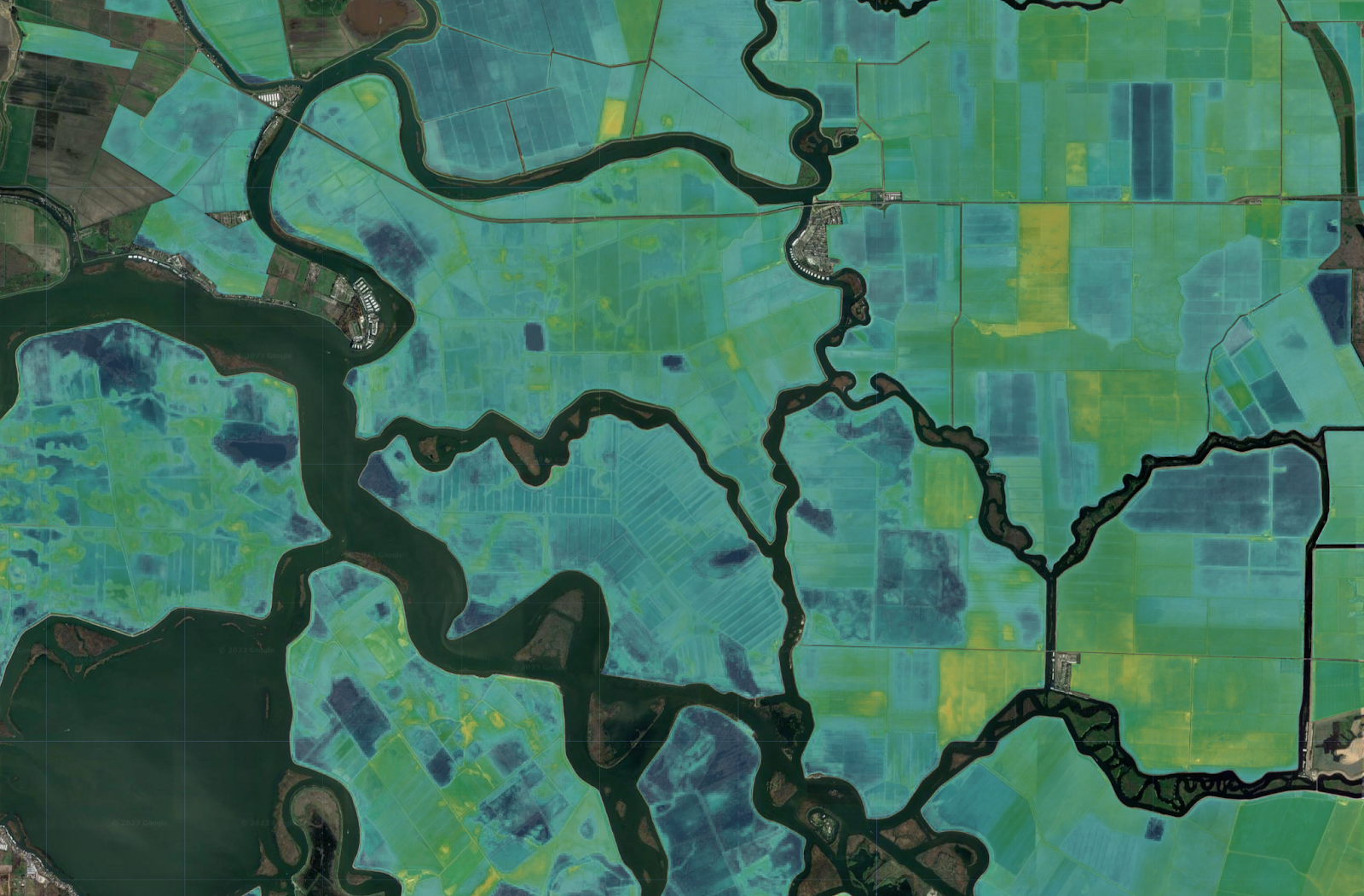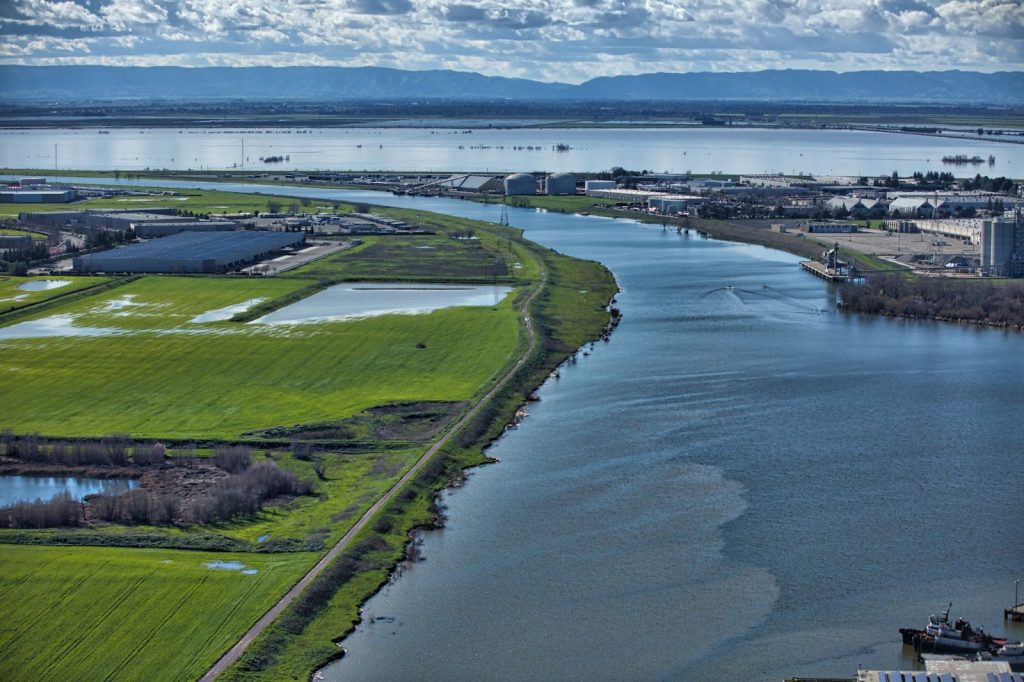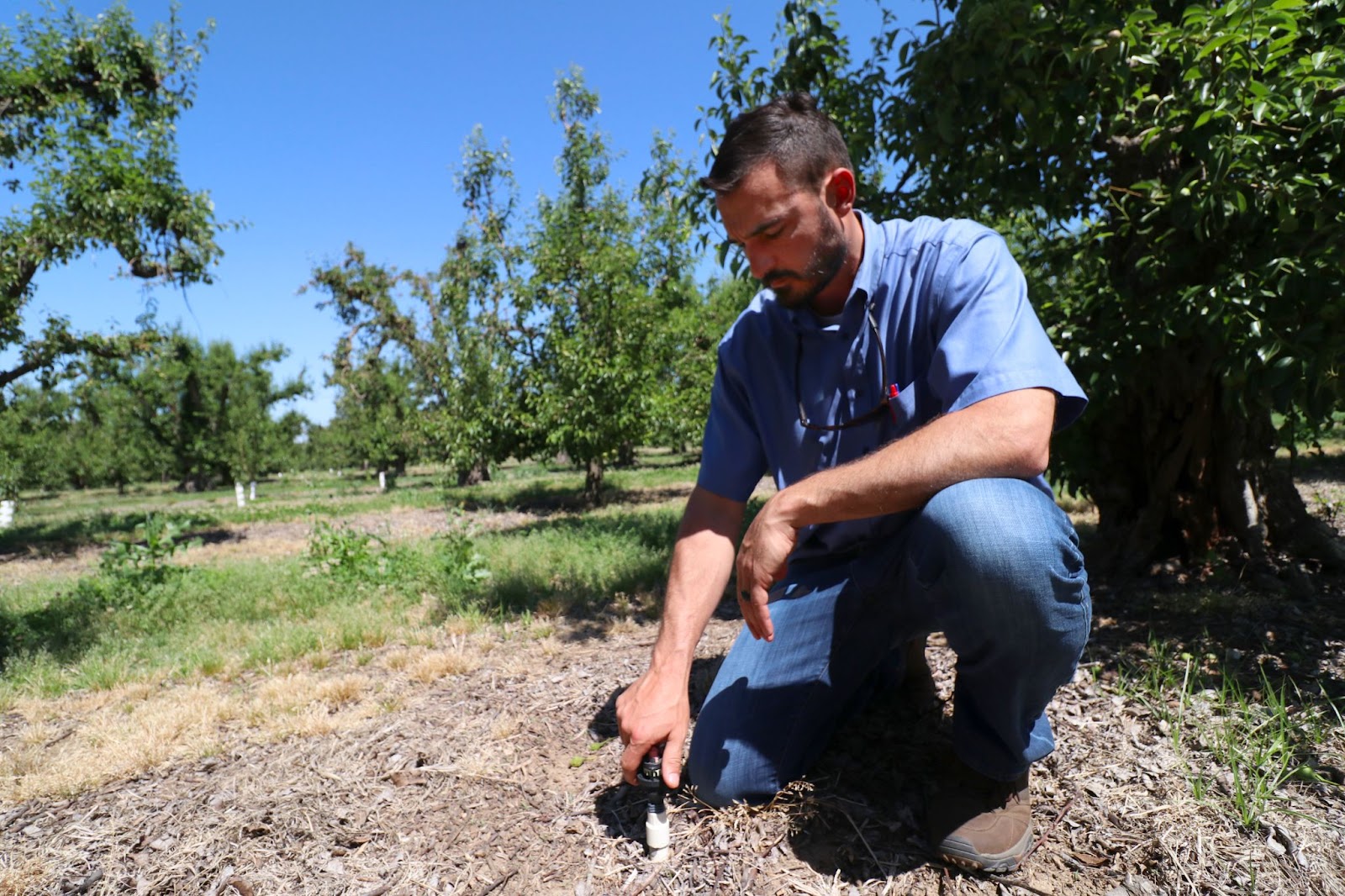An early tester of the OpenET API highlights its utility for providing efficient and consistent data to support groundwater management
By Katie Klug, Brandon Ertis, Jeff Davids, and Will Carrara
In the Colusa Subbasin, which spans more than 700,000 acres in California’s Sacramento Valley, data obtained through the OpenET application programming interface (API) and data services are being used to help meet the challenge of monitoring water use across a diverse landscape with varying water sources and demands. As beta testers of the OpenET API, Davids Engineering has benefitted from the data services the API provides, especially its utility for easily and efficiently retrieving large quantities of ET data for custom areas and time frames, with greater capabilities for automation and time efficiency. This is particularly important as the Subbasin’s two groundwater sustainability agencies – the Colusa Groundwater Authority (CGA) and the Glenn Groundwater Authority (GGA) – work with a diverse group of stakeholders to manage the complex groundwater conditions in the Colusa Subbasin under California’s Sustainable Groundwater Management Act (SGMA).
The OpenET API has provided Davids Engineering, the CGA, and GGA a consistent and efficient way to calculate consumptive water use and crop water demand in the Colusa Subbasin during SGMA implementation. To help capture changing conditions over time, Davids Engineering has leveraged spatial ET data from OpenET together with other spatial land use and surface water supply information. These data are used to compute crop water demand and, in turn, model the amount of groundwater pumping needed to meet demand in areas without sufficient surface water supplies. This information is critical for developing water budgets and for evaluating the impacts of hydrologic conditions and groundwater management practices on consumptive water use.
Most recently, Davids Engineering supported the CGA and GGA in evaluating consumptive water use from different sources in the Colusa Subbasin during water years 2021-2022 as part of their Groundwater Sustainability Plan Annual Reports. OpenET was especially valuable for evaluating crop water demand in this two-year period because conditions were vastly different each year. While both years were dry from a hydrologic perspective, water year 2022 saw substantial curtailments of surface water supplies available for irrigation in many parts of California. In the Colusa Subbasin, these cutbacks led to widespread changes in crop cultivation practices, including substantial idling of rice crops. The impacts that idling had on crop water demand were seen directly in the OpenET data (Figure 1). OpenET allowed Davids Engineering to capture the full extent and impact of idling on crop water use in 2022 with greater accuracy than might have otherwise been captured using traditional crop coefficient approaches or other data sources with more limited spatial or temporal resolution.
Overall, OpenET has provided many benefits in ongoing efforts to support sustainable groundwater management in the Colusa Subbasin and elsewhere in California. Davids Engineering plans to continue using OpenET information to evaluate and track changes in water use, develop water budgets, and investigate the impacts of groundwater management practices over the next 20 years. Groundwater sustainability agencies in California, like the CGA and GGA, are leading the way in sustainable groundwater management, and the use of innovative tools like OpenET will help them to achieve their goals.
Figure 1. Map of ET in the Colusa Subbasin in 2021 and 2022 showing the impacts of reduced surface water supplies in 2022. Decreases in ET are observed for the annotated region where land use changed from predominantly rice in 2021 to predominantly fallow in 2022.

“We at Davids Engineering have been really impressed with the OpenET API. The endpoints are well-designed, and the Swagger user interface for testing is intuitive. The documentation is comprehensive, including useful code examples. The support team has also been responsive and super helpful.”
Jeff Davids, Davids Engineering



